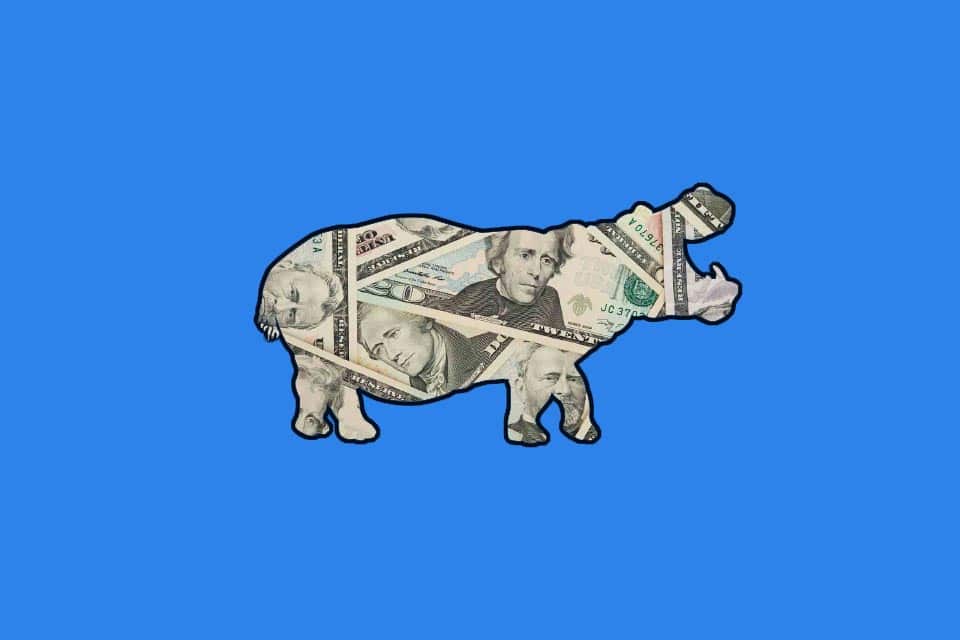What is 15 % Solutions?
Smartpedia: 15 % Solutions is a so-called microstructure of Liberating Structures, which encourages individuals and teams to take action immediately and within their own sphere of influence.
15 % Solutions – every journey begins with the first step
People are many times more productive in working and learning situations when they can actively participate, work together in small teams and help shape their own future. 15 % Solutions is a so-called microstructure of the Liberating Structures. These address the active participation of employees in an organisation as a pattern of interaction and provide a collection of good practices to promote communication and collaboration.
“Even a journey of 100 kilometres begins with the first step.” This statement sums up the intention of 15 % Solutions. It is about initiating bigger changes through first small steps. It is about getting into action without delay and additional resources. The focus is not on a 100 % perfect overall solution, but on the 15 % that lie within the individual sphere of influence of those involved. Instead of looking for reasons why a project or undertaking cannot be started yet, immediate and uncomplicated actions and activities are tackled and thus, figuratively speaking, 15 % of the way to the overall solution is already covered.
The origin of 15 % Solutions
The Liberating Structures were brought together by the US American Keith McCandless and the Frenchman Henri Lipmanowicz. The idea of 15 % Solutions can be traced back to Gareth Morgan and Asaf Zohar of York University.¹ Morgan and Zohar recognised that many companies were looking for ways to restructure and redesign their operations to enable major change. Since in the lived reality of business, most quantum leaps occur incrementally – as a result of high-leverage decisions and actions that steer a company in a new direction, managers should master the art of high-leverage change. They should learn
- to be guided by vision while identifying “doable” high-impact initiatives that challenge and change the status quo.
- how one change can build on another and create a compounding effect.
- how to take advantage of opportunities created by random changes that can lead to unexpected breakthroughs.
Goal and Mindset of 15 % Solutions
“How do you eat an elephant?” – “Piece by piece,” is the appropriate answer to the question people like to ask when an endeavour seems big or difficult.
Regardless of how small and perhaps insignificant individual steps, activities or actions may seem, as long as they are carried out in a targeted manner, they work towards an overall solution – possibly defined at a later stage. 15 % Solutions is therefore primarily about taking action instead of waiting for more favourable framework conditions or approvals from steering committees, for example.
Indirectly, this approach is based on a mindset or a positive attitude that tries to initiate change. It is not about the perfect solution, but about the first steps that may even create the conditions to implement a project. In a way, 15 % Solutions is similar to the 5 Second Rule, which reinforces an impulse to move from thinking to action before objections prevent it.
Tips on 15 % Solutions
There are a number of tips that are useful when applying the microstructure:
- It makes sense to address the idea of the 15 per cent solution together and in principle. On the one hand, it is about taking action both individually and as a team; on the other hand, it makes little sense for everyone involved to simply do what they think is right.
- It is important to understand that small changes can have big effects and consequently initiate big changes.² For this, exchange among each other is also important. In practice, it has proven useful, for example, if individual team members briefly name or list their personal 15 percent solutions for a specific topic, plan or project.
- The exchange on the individual 15 % solutions is not about mutual assessment or even approval of actions, but about a possibly useful synchronisation of the participants.
- The focus of the individuals or the team should be on the aspects that are within their own sphere of influence. For example, it makes little sense to spend money if there is no budget for a project. But it does make sense to activate unused capacities or resources that would otherwise remain unused or fall into disuse.
And, of course, it is advisable to keep an eye on powers and freedoms of action.
Criticism of the 15 Percent Solutions
Getting into action quickly, using individual options for action, tackling tasks that can be realised in the short term – all this sounds reasonable and smart. And also the deliberate question of “What is your/your 15 percent?” or “What can we do now in concrete terms without approvals, further budget or further support?” conveyed a positive basic attitude in which things are simply tackled and realised. That’s good! Nevertheless, there are some points that should not be overlooked by those involved. These points can also be understood as criticism of the microstructure:
- The approach is no substitute for planning, defining goals, coordinating approaches, allocating resources or budgets, communicating with stakeholders, etc. Getting into action is positive, but actions do not take place in a vacuum. Depending on the context, it may make sense to wait, to clarify the exact project mandate, the exact requirements, etc. The approach partially negates other concepts.
- The approach partially negates other concepts such as opportunity costs. If an employee realises his 15 per cent, he cannot do other things in the meantime. Doing this simply by instinct can be counterproductive. For this reason, too, synchronisation between those involved / affected makes sense.
- Depending on the organisation, powers can be very limited or far-reaching. Those with limited authority are likely to be reluctant in corporate practice to jeopardise it through ‘risky’ activities. In other words, 15 % Solutions works particularly well in an agile, adaptive or evolutionary organisation where, for example, there is a good culture of error and feedback.
Incidentally, in the practice of Liberating Structures, it has proven useful to combine microstructures with each other. And the combination with agile approaches such as retrospectives, reviews or the development of prototypes is also relatively popular.
Impulse to discuss
Is the approach also suitable for external service providers?
Notes:
If you like the article or would like to discuss it, please feel free to share it in your network. And if you have any comments, please do not hesitate to send us a message.
[1] Gareth Morgen and Asaf Zohar: Achieving Quantum Change: Incrementally! The Art of High Leverage Change
[2] The butterfly effect is often mentioned in this context. This states, among other things, that an arbitrarily small change in the initial conditions of a system can have a long-term effect on the development of the system.
[3] Further tips can be found on the Liberating Structures website.
Shaping the new togetherness describes the practical application of 15 % solutions.
Here you will find additional information from our Smartpedia section:



